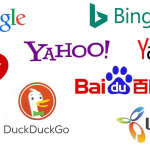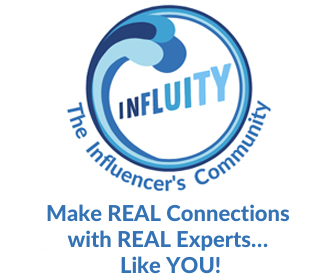Building a personal brand is more important now than ever. Whether you’re an entrepreneur, a professional, or a thought leader aiming to stand out in your industry, having a strong personal brand can make all the difference. With the new trends and opportunities of 2024 on the horizon, now is the perfect time to craft a personal branding strategy that highlights your unique identity and goals. This guide will walk you through the ins and outs of personal branding and offer practical steps to assist you in creating a thriving personal brand.
What You Need to Understand About Personal Branding in 2024
What is Personal Branding?
Personal branding involves establishing and promoting a public image that authentically reflects your values, talents, and character. It’s all about shaping an identity that sets you apart from others, both personally and professionally. In 2024, personal branding has expanded beyond just your online presence to include how you engage with others and present yourself in real-world settings.
The Significance of Personal Branding
Personal branding plays a big role in establishing trust and credibility within your specific niche. Having a strong personal brand can make all the difference in securing a job or attracting clients. It also helps shape a consistent image of who you are and what you stand for, making it easier for others to remember and connect with you.
Common Misconceptions About Personal Branding
There are several misconceptions about personal branding that often lead people to overlook its advantages. Contrary to popular belief, personal branding is not limited to celebrities and influencers, it can benefit anyone. Personal branding encompasses more than just your online presence—it also includes how you present yourself in real life, your work ethic, and your professional relationships. Let’s debunk these misconceptions so that you can create an authentic and impactful personal brand.
Personal Branding Isn’t Just for Celebrities or Influencers
A common misconception is that personal branding is exclusive to celebrities or influencers. Many individuals assume that if they are not in the public eye, personal branding does not apply to them. However, this notion is far from accurate. Whether you are a corporate professional, a freelancer, or a small business owner, cultivating a strong personal brand can significantly enhance your career prospects and business endeavors. Personal branding involves defining and consistently showcasing your identity and values, which is valuable for anyone looking to leave a lasting impression in their field.
Personal Branding is Solely About Your Online Presence
While social media platforms like LinkedIn, Instagram, and Twitter play a significant role in building and promoting your brand, they are just one part of the equation. Personal branding goes beyond the digital space. It encompasses how you interact in face-to-face interactions, your work ethic, the quality of your work, and your professional connections. Your brand is also evident in how you communicate, dress, and handle successes and failures. Essentially, personal branding covers every aspect of how you present yourself to others.
Personal Branding Means Crafting a False or Overly Polished Image
Another myth about personal branding is that it involves creating a false or overly polished image. Effective personal branding is grounded in authenticity. It’s about displaying your true self—your strengths, values, interests, and even imperfections—in a sincere and relatable way.
Personal Branding is a One-Time Effort
Building your personal brand is not a one-time task. It’s an ongoing journey that evolves as you do. Regularly updating your brand to showcase new skills, experiences, and insights is key to staying relevant and impactful.
What Does a Personal Branding Strategy Entail?
A personal branding strategy is a roadmap that outlines the necessary steps to create, nurture, and grow your personal brand. It involves recognizing your strengths, values, and objectives and using them to craft a compelling public image. This strategy should align with your professional goals and personal beliefs, ensuring consistency in how you present yourself across various platforms.
Essentials to Keep in Mind When Building a Personal Branding Strategy in 2024

Authenticity: Your personal brand should authentically represent who you are. Being genuine fosters trust and makes your brand more relatable. Share your personal stories, beliefs, and even your setbacks. It’s the unique narrative that resonates with others and leaves a lasting impression of your brand. Remember, authenticity isn’t about striving for perfection but rather about staying true to yourself.
Consistency: Consistency is key in reinforcing your brand image. Ensure that your messaging remains consistent across all platforms and interactions. This means maintaining a unified tone, style, and visual elements whether engaging on LinkedIn, presenting at an event, or networking with peers. Consistency is important in establishing a strong and recognizable brand that instills trust in people.
Visibility: Be active on platforms where your target audience frequents. Increased visibility expands your reach and impact. The more visible you are, the greater the chances of connecting with your audience and showcasing your expertise.
Engagement: Regularly interact with your audience to cultivate relationships and loyalty. Respond to comments, engage in conversations, and offer valuable insights. Demonstrate your concern for the thoughts and needs of your audience. Engagement is not just about broadcasting; it involves creating a community centered around your brand. By actively engaging with your audience, you transform followers into enthusiasts and connections into advocates.
Adaptability: Keep ahead of industry trends and be ready to adjust your approach when necessary. The digital space is constantly changing, rendering yesterday’s successes ineffective tomorrow. Being adaptable means staying updated on the latest trends and technologies, embracing change, and evolving alongside your audience and the market. Flexibility could be your key to maintaining a relevant and dynamic personal brand.
Benefits of Building a Personal Branding Strategy
Increased Recognition: A robust personal brand enhances recognition and memorability. When your brand is well-defined and consistent, people can easily recognize and remember you. This visibility is crucial in a competitive market where everyone seeks attention. It sets you apart from competitors and ensures you are at the forefront of opportunities and partnerships.
More Credibility: Establishing yourself as an authority in your field fosters trust with your audience. When individuals view you as knowledgeable and dependable, they are more inclined to seek out your guidance and offerings. Your personal brand reflects your expertise and professionalism, consistently showcasing your skills and sharing valuable insights to boost credibility. This helps establish you as the go-to in your field.
Career Growth: Crafting a strong personal brand can create new opportunities for career advancement. Employers and clients are always seeking individuals who bring unique value. Your personal brand highlights your strengths, experiences, and what makes you stand out, making you a compelling candidate. It can lead to promotions, new roles, or entrepreneurial endeavors. Essentially, your personal brand serves as a powerful advocate for your career.
Networking Opportunities: A well-defined personal brand attracts like-minded professionals and can help to expand your professional network. People with similar values and interests naturally gravitate towards you when you have an authentic brand. This network can offer support, collaboration opportunities, and other important connections. Networking is not just about who you know but also about who knows you—and a strong personal brand ensures that you are recognized for the right reasons.
Steps to Develop Your Personal Branding Strategy
1. Self-Evaluation
The initial step in shaping the strategy for your personal brand involves self-evaluation. Recognize your strengths, values, and unique attributes. Knowing yourself and what makes you special will help you in building out your strategy. Reflect on your talents, interests, and background. What distinguishes you from others? This introspective process will help you create a genuine brand that is harmonious with your authentic self. Your personal brand should authentically reflect who you are and what you believe in.
2. Identify Your Target Audience
Now it’s time to identify your target audience. Understand who you aim to connect with and tailor your brand accordingly to appeal to them. Your audience may include potential employers, clients, industry peers, or the general public. By understanding the personalities, struggles, and aspirations of your audience, you can craft messages that resonate with them effectively. The more precise you are about your target audience, the more impactful your branding endeavors will be. Consider the value you can offer and how you can address their issues or fulfill their needs.
3. Establish Your Goals
Decide on the goals you wish to accomplish with your personal brand. Do you seek career progression, thought leadership, increased exposure, or something else? Defining specific, measurable objectives gives you a sense of direction and purpose. These objectives will shape your branding approach and help you focus on what truly matters. Whether it involves securing a new job, expanding your follower base, or establishing yourself as an expert in your field, having clear objectives will keep you driven and on course.
4. Create a Consistent Message
Develop a consistent message that mirrors your brand and resonates with your target audience. Your message should convey your unique value proposition and core beliefs. Ensure that your message is evident across all platforms and interactions – from social media profiles to professional bios and personal engagements. A consistent message fosters trust and reinforces the identity of your brand.

5. Build an Online Presence
In today’s digital era, establishing an online presence is crucial. Create and manage profiles on relevant social media platforms and contemplate starting a blog or website to showcase your expertise. Platforms like LinkedIn, Twitter, and Instagram, along with personal websites, serve as powerful tools for shaping and promoting your brand.
6. Network
Networking is huge when it comes to personal branding. Attend industry events whenever possible, join professional groups, and connect with peers in your industry. Building relationships through networking can provide new insights, create new opportunities, and help you grow personally and professionally.
7. Showcasing Achievements
Highlighting your achievements is an important component for your personal brand. Don’t be afraid to share your successes, awards, and accolades on social media platforms, websites, and in professional interactions. This demonstrates your expertise and helps establish trust and credibility with your audience.
8. Monitor and Adjust
It’s important to regularly review and adjust your personal branding strategy to ensure it remains relevant and effective in ever-changing digital space. Stay on top of industry trends and make necessary changes to keep pace with the dynamic nature of branding. Keep track of your progress, seek feedback, and be willing to make changes. Adapt your approach based on what is effective and what is not. Being flexible and responsive ensures that your brand stays current and impactful.
By taking these steps, you can develop a strong personal branding strategy that showcases your identity, connects with your audience and helps you reach your objectives.
Personal Branding Examples
Oprah Winfrey
Oprah Winfrey has established her personal brand by embodying authenticity, empathy, and empowerment. Her unwavering commitment to self-improvement and philanthropy has earned her the trust and admiration of many, making her an impactful figure. This brand identity is evident in her talk show, charitable endeavors, and diverse media projects.
Takeaway: Oprah’s success shows the value of being genuine and compassionate. Her emphasis on empowerment and personal growth deeply resonates with her audiences, fostering a strong trust-based bond.
Elon Musk
Renowned for his groundbreaking ideas and bold aspirations, Elon Musk’s personal brand is synonymous with technological innovation and forward-thinking approaches. His involvement in groundbreaking ventures like Tesla, SpaceX, and Neuralink reflects his commitment to pushing boundaries. Musk’s candid, unconventional, yet transparent communication style sets him apart from other tech leaders.
Takeaway: Musk’s brand highlights innovation and openness. His readiness to share audacious concepts openly while embracing failures has shaped his influential personal brand.
Michelle Obama
Michelle Obama’s personal branding revolves around empowerment, education, and well-being. Michelle Obama, the former First Lady of the United States, has used her influence to support causes like girls’ education, military families, and healthy eating through her initiative “Let’s Move!” Her down-to-earth, relatable communication style has endeared her to people worldwide.

Takeaway: Michelle Obama’s brand highlights the significance of using one’s platform for advocacy and positive change. Her focus on empowerment and authenticity showcases how a personal brand can impact and motivate millions.
Personal Branding Strategy Template
Developing a personal brand requires careful planning and consistent dedication. Utilize this guide to help you navigate the process of crafting a strong, genuine personal brand:
Vision Statement
Craft a concise vision statement that captures the essence of what you want your personal brand to stand for.
- Outline your long-term goals.
- Define the fundamental values and beliefs that will shape your brand.
Example: “My personal brand embodies innovation, honesty, and a commitment to lifelong learning. I seek to inspire others through my dedication to sustainable practices and community involvement.”
Target Audience
Identify and characterize your target audience effectively.
- Detail your ideal audience (employers, clients, industry peers, etc.)
- Comprehend their requirements, preferences and challenges.
Example: “My target audience includes technology entrepreneurs, sustainable business advocates, and industry professionals looking for innovative solutions in environmental sustainability.”
Brand Message
Craft a concise brand message that showcases your unique value proposition. Make sure it captures your brand essence, strengths, and what makes you stand out.
- Create a clear and concise message that reflects your brand.
- Ensure it communicates your unique strengths and what sets you apart.
Example: “I strive to be an innovative entrepreneur committed to driving sustainable progress and empowering others with advanced technology and ethical business practices.”
Content Plan
Create a content plan detailing the kinds of content you intend to produce and the platforms you will utilize.
- Outline the content formats you’ll focus on (such as blog posts, videos, social media updates).
- Establish a content schedule to maintain consistent posting.
Example: “I will create weekly blog posts on sustainability trends, bi-weekly videos on cutting-edge technologies, and daily social media updates sharing insights and industry updates. I’ll utilize platforms like LinkedIn, Twitter, and my personal website.”
Networking Strategy
Define your networking approach for both online and offline interactions.
- Pinpoint important events, professional communities, and networking channels.
- Formulate a strategy for ongoing engagement and relationship cultivation.
Example: “I will attend quarterly industry conferences, join online groups related to sustainable business, and participate in monthly networking events. I will schedule weekly virtual coffee chats with industry peers and mentors.”
Metrics for Success
To gauge the success of your personal branding efforts, outline how you plan to measure it. Specify metrics like growth in followers on social media platforms, increased engagement levels, job opportunities, and chances to speak at events.
Example: “I aim to see a 20% rise in LinkedIn followers, a 15% boost in engagement on my posts across social media channels, secure three speaking slots at industry conferences, and receive five job offers or collaboration requests within the next year.”
Using this guideline, you can craft a strong strategy that accurately mirrors who you are, connects with your desired audience effectively, and helps achieve your objectives.
Collaborating with Otter PR for Personal Branding Development
Creating a personal branding strategy comes with challenges, but fear not, as you do not have to tackle it solo. Otter PR specializes in helping people craft personal brands that make an impact. Our team of professionals will collaborate with you to create a tailored strategy that aligns with your goals and ensures your message reaches the right people.
Tags: business success, Digital marketing, Personal brand, PR, Public relations
The post How to Craft a Personal Branding Strategy in 2024 first appeared on Otter PR.
The post How to Craft a Personal Branding Strategy in 2024 appeared first on Otter PR.
















